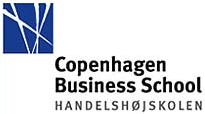No 13-2021: Regional Carbon Markets in China: Cointegration and Heterogeneity
Chenyan Lyu ()
Additional contact information
Chenyan Lyu: Copenhagen School of Energy Infrastructure, Department of Economics, Copenhagen Business School, Postal: Copenhagen Business School, Department of Economics, Porcelaenshaven 16 A. 1. floor, DK-2000 Frederiksberg, Denmark
Abstract: China accounts for the largest share of the world’s total greenhouse gas emissions. The scale and growth of industrial activities and energy consumption in China explain the high level of emissions. Achieving “carbon neutrality” through administrative means can be effective but also costly and inefficient. The emission trading scheme is a way to put a price on carbon. The absence of such a mechanism could let low efficiency continue, delay the adoption of clean energy practices, risk a shortage of energy, and even allow corruption in regulation of emissions. In 2013, the government introduced pilot emission trading schemes; and a national ETS, which has started trading since June 2021, is becoming the world’s largest carbon market. This paper focuses on the fragmentation of and integration levels within China’s regional Emission Trading Schemes (ETSs) and the potential models the regional schemes — in Beijing, Shanghai, Shenzhen, Hubei, and Guangdong — offer for national effectiveness. The empirical results from this study suggest the general low level of co-integration in China’s ETS pilots within the sample period may be due to the different economic development levels, energy structures, and degrees of government supervision in each pilot as well as different choices of sector coverage and market threshold in regional ETSs. As the national ETS is at a key stage of construction, greater attention should be paid to exploring reasons for differences among the regional pilot carbon markets, to improve market mechanisms.
Keywords: Carbon markets; China’s regional emissions trading; Emission allowances; Market architecture; Cointegration
37 pages, August 5, 2021
Full text files
29ee9703-79f3-4d6f-9a99-5b7296260903Full text
- Copenhagen Business School, Department of Economics
- Ordering Working Papers
- Home page for this series
Questions (including download problems) about the papers in this series should be directed to Lars Nondal ()
Report other problems with accessing this service to Sune Karlsson ().
RePEc:hhs:cbsnow:2021_013This page generated on 2025-12-06 04:38:38.

